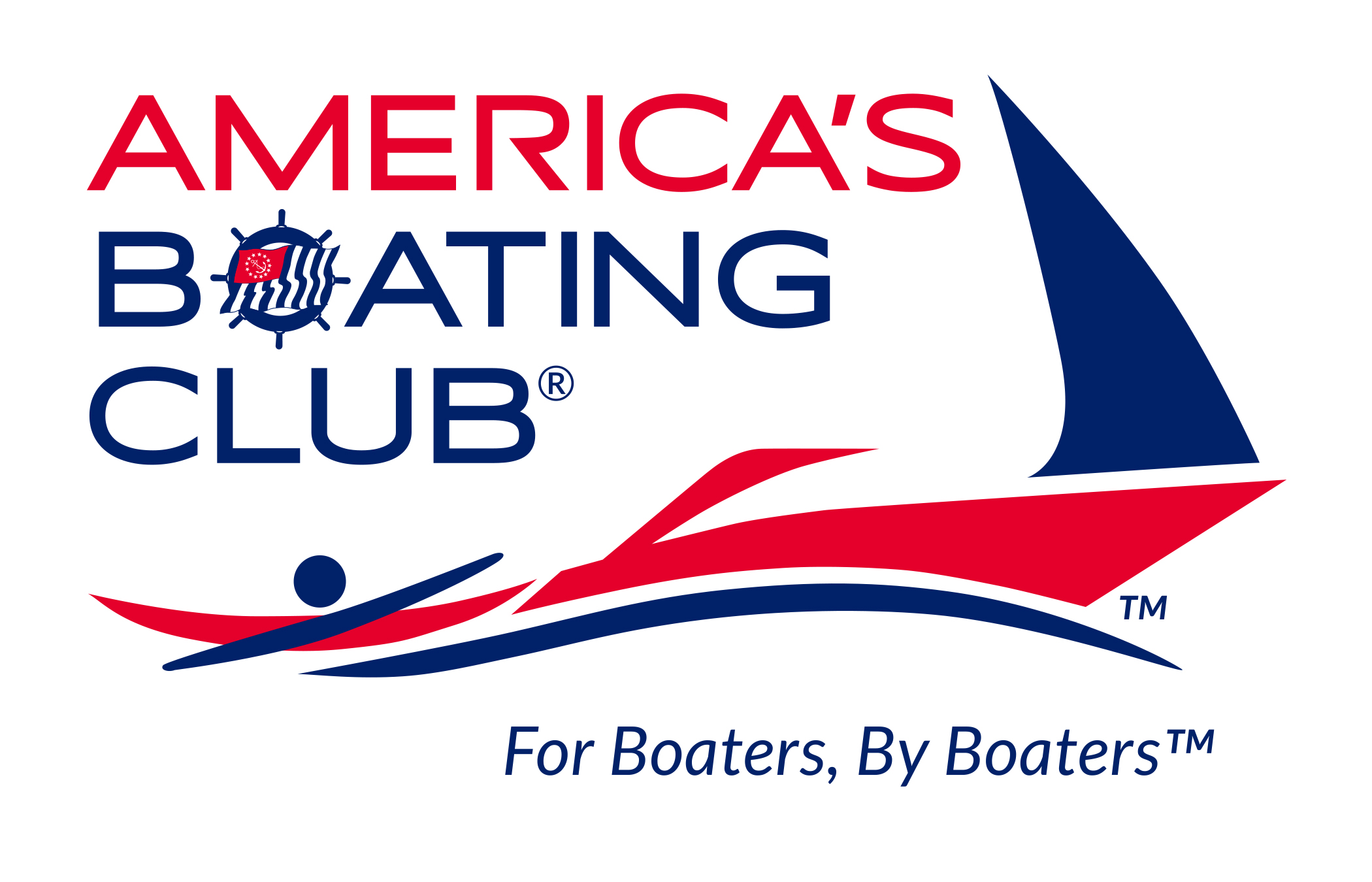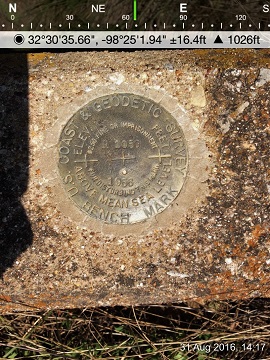

.jpg) |
Fort Worth Sail & Power Squadron |
This page contains information specific to finding and reporting geodetic surevying benchmarks for the USPS Cooperative Charting Program. This is a lot of information and these sites can be rather intimidating at first. Please contact me if you need help.
Information about the nautical program can be found on the USPS web site.
"Cooperative Charting" refers to an agreement between the United States Power Squadrons (USPS) and the National Oceanic and Atmospheric Administration (NOAA). The agreement was first executed in 1963 and revised in January 1971 and again in 1983. The current agreement is "...to produce accurate and up-to-date nautical and aeronautical charts and related products and to preserve geodetic control stations in the National Geodetic Reference System (NGRS) through the use of well-trained volunteer observers."
NOAA was established in October of 1970 as part of the Department of Commerce. It is charged with providing weather forecasts, charting our coastal and estuarine waterways, producing aeronautical charts and supporting our marine fisheries industry. As part of these responsibilities, they produce and maintain over 970 nautical charts and 9 Coast Pilots for navigating our coastal waters and Great Lakes. The agency produces over 8,000 aeronautical charts and has installed and maintains over 750,000 geodetic control marks that provide the base geographic framework for mapping and charting, boundaries and property lines, and setting precise positions of space craft and satellites.
Maintaining and up-grading this information against the changes made by nature and mankind is truly a monumental task. Changes occur so frequently that no amount of tax supported effort would be adequate to supply the corrections necessary to keep these documents current. As participants in the Cooperative Charting Program, USPS members observe these changes and submit corrections to NOAA, thereby saving the government (and tax payers) millions of dollars. In fact, Cooperative Charting has become the most effective user-participation program in all of the Federal services.
Geodetic marks are highly accurate reference points established on the surface of the earth by local, state, and national agencies. Maintenance and preservation of these marks is of utmost importance to users of the net and to the National Geodetic Survey (NGS), recognizing that many valuable geodetic marks are destroyed by construction, new roads, erosion, or for other causes. Our job is to locate each of these marks and report their condition together with any change in the directions needed to locate them.
There are basically two types of marks, horizontal reference and vertical reference. Although the advances in GPS technology have made the horizontal reference marks less of a necessity in surveying, GPS cannot measure elevations accuracy so the vertical reference marks are still necessary for accurate surveying.
Normally, geodetic marks are round bronze discs, roughly 3 inches in diameter, firmly imbedded in concrete, bedrock or on a long rod driven into the ground. The objective of this cooperative charting geodetic mark recovery program is to locate and identify these marks and to report on their condition as Good, Poor, Not Found, or Destroyed. This is a valuable public service and, at the same time, an opportunity for Squadron members to get together for a fun off-the-water activity.
General Requirements:The Geodetic Mark Recovery Program (aka Benchmarking) site on the USPS web site has links to more information about the program. http://www.usps.org/index.php/departments/12000/12200/geodetic-program
Also check out this Word document:
Overview_of_GMR.docx
A datasheet contains the information about a benchmark. It is a text file generated from a database managed by the NGS. Some of the tools described below have links to directly access the datasheets.
Datasheets can also be downloaded directly from the NGS Datasheet Retrieval site.
http://www.ngs.noaa.gov/datasheets/
This is the datasheet for mark CT0053 near Strawn, TX (west of Fort Worth). Finding this particular mark was much easier using a laptop computer, a mapping program (Street Atlas), and a connected GPS, which I started using in 1999. The program took me right to the mark, which otherwise would have been difficult because the datasheet provides directions along a highway that had been rerouted. This technique is now easier with the tools below, although this one does not require a cell phone connection. Checking an old topographic map (from prior to the rerouting) would also have helped.
The site has several options for retrieving single datasheets, or multiple sheets within an area using various search options. It also has a document (dsdata.pdf) that describes the information on a datasheet in great detail.
Please read this document thoroughly before you go searching. It describes the information needed and the scoring system. https://www.usps.org/images/Exec/CoopCh/PDFs/2018_07-01_Geodetics_SOP_Revised_Approved_May_2018.pdf
Where do you find a benchmark? Well, that’s so much easier now than it used to be. Everything is online and easy to find. You don’t have to go very far to find a benchmark and most have not been reported in quite a while.
Some tools that are very good for finding marks are described below.Another handy tool on this site(or directly on Google Maps or Google Earth), is to use the Street View function. This can show you photos of the search area from the point-of-view as if you were driving around (which is what it actually is). If you are lucky, you might actually see the mark, especially if it is monumented in a sidewalk, storm drain, or building.
Once you have a good idea of the location of the mark and have its datasheet, you can go out and search for the mark. Note that the location shown on the map may be as much as 100 feet from the true location. (A position reported on the datasheet that is to the nearest second of lat/lon can be that far off). The description on the datasheet will help locate the mark, but keep in mind some of these are very old and the area around the mark may have changed considerably from when it was monumented. See the section on Quad Maps below.
There is also a program called DSWorld you download and install directly on your computer. You can download an entire county's or State's datasheets, view the marks in Google Earth (with links to the datasheets and Geocaching data), and convert points for use in a handheld GPS or Street Atlas. It can also be used to upload reports to NGS, but at this time all reports need to go through USPS for credit. If you are familiar with the previous USPS benchmark program, this software replaces the CD of datasheets and extraction software. It is the program used by the USPS evaluators to submit the reports.
DSWorld is downloaded from the NGS site at:
http://www.ngs.noaa.gov/PC_PROD/PARTNERS/
This page describes the program and has a video of how to use it.
http://www.ngs.noaa.gov/corbin/class_description/DSWorld_0212.shtml
Other usfeul apps are "GPS Tape Measure" and "GPS Waypoint Finder".
Geocaching is an outdoor activity that involves using a GPS to find things other people have placed in interesting areas. Members also look for benchmarks and report them on the Geocaching web site (some also report on the NGS site). Some also provide information about how they found the marks and even provide photos. This information can be extremely handy to check before you go searching for the mark yourself. It can save you a lot of time and effort. Even some marks previously reported as “Not Found” have been located by Geocachers.
This page lets you input the PID of the mark or search a particular zip code. It also has a very extensive description of benchmarks.
https://www.geocaching.com/mark/
On the page for a particular PID,
you can search automatically for nearby benchmarks. This will generate a list, complete with notations of the recovery status.
This site lets you search on some other parameters.
https://www.geocaching.com/mark/nearest.aspx
Bear in mind that the Geocaching site uses a copy of the NGS database from the year 2000, so the datasheets may not be up-to-date. Use the link to the NGS site above or the Find-a-Control app to get the latest version.
USGS Quadrangle maps are highly accurate and detailed topographic maps covering an area bounded by particular latitudes and longitudes.
The ones most useful cover 7.5 minutes square. Many benchmarks are indicated directly on these maps.
They can be downloaded here:
https://store.usgs.gov/map-locator
A very useful addition to this site is that you can download old versions of a quad map that may help find benchmarks in areas
that have been redeveloped. Sometimes a description will use a road that has been rerouted since the mark was monumented,
but the mark is still at the original location (see the example above in Datasheets.
Essentially, it involves taking a summary of datasheet data (PID and location) from one of the above sources (e.g. Data Explorer) for multiple marks and importing it into Street Atlas for use in areas without Internet access. I use Microsoft Excel to convert the mark summary data into a format usable by Delorme's Street Atlas and/or Topo USA. These programs have the advantage of storing the mark locations in a file on the computer and using a GPS to direct the user to the mark. An Internet connection is not required, but datasheets must be printed or stored separately if one is not available.
Once you have located a mark and have a photo, it simply needs to be reported to USPS.
This is the link to the reporting web site:
http://www.usps.org/index.php/departments/12000/12200/geodetic-program?type=article&id=439
The site has forms to help record and organize recovery efforts involving many
members and marks.
The form to actually report the marks is at this site:
https://form.jotform.com/73644321105144
You will enter your USPS member number, name, squadron name, district number,
and percent participation (which can be divided among multiple members if on a group trip).
You then enter the benchmark information and a photograph. Be sure to read the
document in the link above for specifics about the photos.
For the benchmark photo, I have been using an iPhone app called “Solocator”. It imprints all the required information directly in the photo. Be sure to change the settings for the position display to show the highest precision (most decimal places) and use "DDD MM SS.SS" or "deg min sec" as the preferred format. For Android devices, an app called "Camera Timestamp" is recommeded.
Here is an example photo:

Other Cooperative Charting Links
Updated 14 November 2018